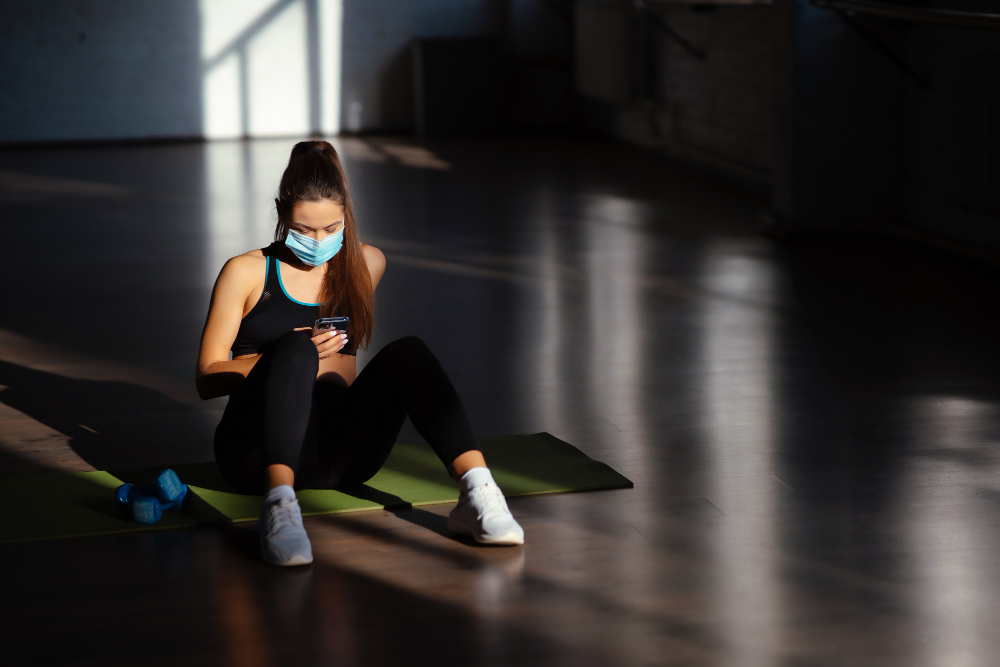Well-Being: Fitness & Diet
Returning To Exercise After COVID-19 Recovery
By H.S. (staff writer) , published on November 21, 2021

Medicine Telehealth Health
Returning to normalcy after recovering from the COVID-19 is quite challenging. Whether you have recovered from mild illness or severe illness, a gradual progression back to your physical activity is important. However, the symptoms can worsen if you return to exercise after being mildly symptomatic. Therefore, it is important to communicate with your doctor or healthcare provider before resuming physical activity.
How COVID-19 Affects Your Lungs And Heart?
Do you know about the receptors to which the virus binds? The new coronavirus binds to both upper and lower respiratory tract receptors, giving you cold and cough-like symptoms. It triggers inflammation in your lungs because your immune system tries to ward off the virus, starting the symptoms of pneumonia.
People who get infected with COVID-19 get back to their normal lung function within 4-5 weeks. Until then, your physical activity becomes harder than usual because of the persistence of fatigue, shortness of breath, and cough [1].
According to many studies published on COVID-19 patients, heart problems, such as myocarditis, have become a particular concern in them. The existing myocarditis may worsen when you continue to exercise, even if you're infected with the virus. The viral replication can increase with the worsening of myocarditis [2].
Easing Back To Exercising:
Because of viral effects on cardiac health, heart arrhythmia and heart inflammation are very common in middle-aged people. With the likelihood of heart complications, they should seek medical advice from their cardiologist to get back to exercise. Physical activity can become difficult because of the post-viral syndrome after COVID-19, leaving people tired and weak [3].
It is also important to get out of bed while you're sick and take deep breaths to maintain your lungs function because of deconditioning after bed rest.
Here are some steps to ease back to exercise:
1. If you’re still sick, don’t exercise:
If you still feel sick after the recovery, do not indulge in any hard physical activity. The symptoms may be palpitations, shortness of breath even at rest, cough, and chest pain.
2. Get back to exercise slowly:
If you feel no chest pain or shortness of breath after a mild symptomatic infection, it is still important to wait for seven days after your recovery before getting back to exercise. Begin at 50% of normal exercise. It is recommended to return to your full activity stepwise and gradually.
3. Don’t exercise if symptoms develop again:
You should consult your doctor if your symptoms return after exercising. These symptoms may include palpitations, fever, chest pain, or shortness of breath [4].
4. If you have a heart complication, see your doctor before returning to exercise:
Before re-indulging into exercise, you should seek advice from your cardiologist. If you have symptoms like fatigue, weakness, chest pain, and shortness of breath, your doctor might recommend a test for myocardial inflammation.
5. Get Tested:
Get your COVID-19 test done before resuming your physical activity, even if you have flu and cold symptoms. If you have COVID-19, get a test and let your doctor decide about getting back to exercise [5].
Conclusion:
COVID-19 carries the risk of cardiovascular disease with significant mortality and morbidity. Be mindful of your body, ease up, and keep in touch with your doctor. If you have difficulty building back your stamina, you should improve your lung function.
References:
[1] C.P.T CS. When Is It OK to Start Exercising After Recovering From Coronavirus? SELF. Retrieved from: https://www.self.com/story/exercising-after-coronaviru
[2] How Does COVID-19 Affect the Heart? | Houston Methodist On Health. Retrieved from: https://www.houstonmethodist.org/blog/articles/2021/mar/how-does-covid-19-affect-the-heart/
[3] Post-viral fatigue and COVID-19: lessons from past epidemics. Retrieved from: https://www.tandfonline.com/doi/full/10.1080/21641846.2020.1778227
[4] Frellick M. Four Steps to Ease COVID Patients Back to Exercise. WebMD. Retrieved from: https://www.webmd.com/lung/news/20210308/four-steps-to-ease-covid-patients-back-to-exercise
[5] Metzl JD, M.D. Exercise After Covid-19? Take It Slow. The New York Times. 2020 Nov 17. Retrieved from: https://www.nytimes.com/2020/11/17/well/move/exercise-covid-recovery-complications-clots-heart-lungs.html
Find articles related to: Medicine Telehealth Health
More articles about Well-Being: Fitness & Diet
Back to the Health Tips Index




